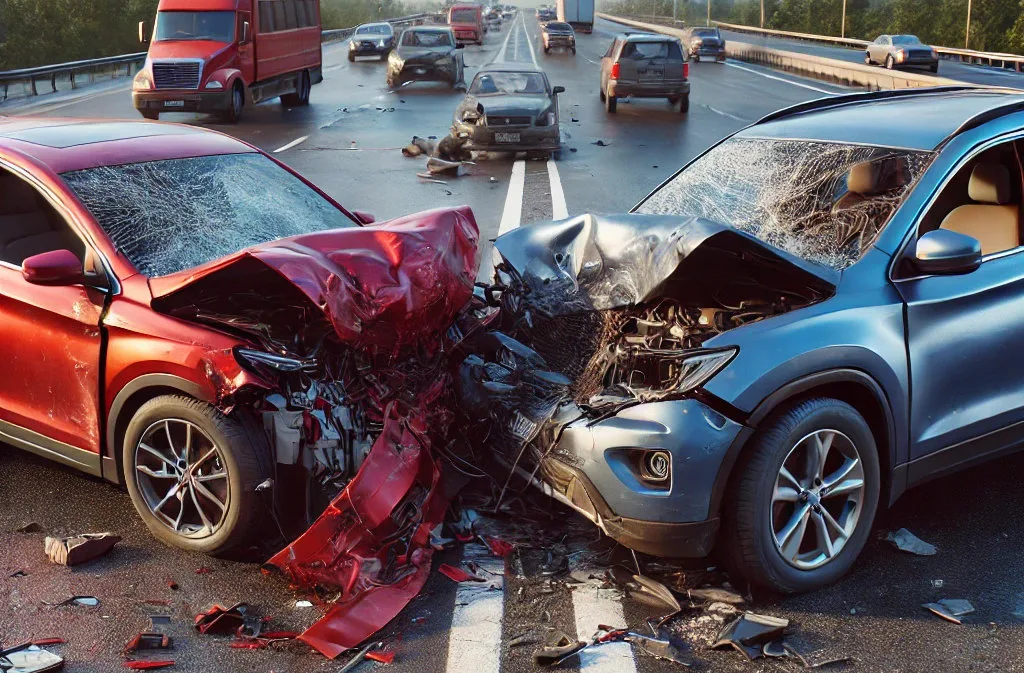What to Do If Your Car Accident Was Caused by a Defective Vehicle or Part

No one ever expects to be in a car accident. However, the reality is that car accidents occur frequently every day. In fact, according to one source, a car accident occurred every 6 minutes within one recent year.
It’s true that the cause of most car accident cases is a negligent driver. But, in some cases, a defective car part or a flaw in the vehicle’s design contributed to a serious accident. When this occurs, how can it be proven that a defective car part was the cause? And who could be potentially liable?
Most Common Types of Defects in Vehicles or Parts
When a vehicle component fails, it often leads to severe car accidents. Since cars are made of multiple systems and parts, it is difficult to know for sure in advance if any component is flawed.
However, the following list highlights some of the most common defects in vehicles themselves or their parts:
- Brake failure: A driver typically applies the brakes at a reasonable distance, expecting the car to slow and come to a full stop. However, if the brakes fail, the result may be a rear-end collision. A failure of the brakes can be due to a faulty component in the braking system.
- Faulty steering system: When the steering system is defective, the driver may lose control of the car. This can result in a head-on collision. In car accidents of this nature, victims are typically left with serious injuries.
- Defective airbags: Although designed to protect occupants in the case of an accident, a defective car airbag can deploy unexpectedly. When this happens, the driver may suffer head or neck injuries. Even if he or she is not seriously injured, the driver’s view may be blocked, causing the car to crash into other vehicles on the road.
- Defective car tires: Blowouts occur when a tire depressurizes. There are various possible causes of tire blowouts, such as uneven tread wear, extreme heat, and manufacturing defects. If a blowout occurs from defective tires, a rollover accident may result, or the driver may lose control of the car.
- Defective car windshield wipers: Having the windshield clean and clear in inclement weather is crucial to safe driving. If the wipers are defective, a driver’s visibility can be decreased. In some cases, a windshield wiper malfunction can occur intermittently.
- Malfunctioning ignition switch: The ignition switch starts the electricity, which makes the engine run. A defective car ignition switch can cause a car to lose power or even completely stall. If this happens while traveling on the freeway, the results can be disastrous.
- Malfunctioning shifter: A driver would typically start the car and shift from park to drive and think nothing of it. But what if the shifter malfunctions and moves from “drive” to “park” while driving or even “reverse”? This has occurred in some instances, and the result can be disastrous.
- Defective car accelerator: In some cases, a car will speed up on its own. This is usually due to a faulty accelerator. This can be a terrifying experience for the driver since it could result in a catastrophic or fatal car accident. Even as recently as 2024, one company issued a massive recall due to a faulty accelerator in their vehicles.
- Cruise control malfunction: Cruise control has provided a safe way of driving on the highway by maintaining a steady speed. It also helps drivers to rest their feet by not having to manipulate the pedals continuously. However, a malfunction of the cruise control system could result in a vehicle being stuck in drive or even accelerating when there is a need to brake.
These are just a few examples of some of the most common types of motor vehicle defects. This list is not comprehensive. There are many other types of defects, such as engine stalling or defective software, which can cause serious motor vehicle accidents. If you have any questions about this matter, our experienced product liability attorneys can provide the answers you need.
Potentially Liable Parties
In the aftermath of a car accident, one of your first steps is determining liability. In most cases, a negligent other driver is found to be at fault. However, in some cases, it’s discovered that a defective car part was the cause.
When this happens, the question arises: Who is potentially responsible for compensating you for medical expenses, property damage, and lost wages? In cases of defective vehicles or parts, there are several potentially liable parties.
Liable parties may include:
- The designer: If the design in itself is flawed, then the designer of the vehicle or part may be held liable for damages. It may be that the designer failed to correct a problem when it was discovered. Or, he or she failed to use a safer alternative to the design. Such negligent actions could have rendered the part unsafe for use.
- The vehicle manufacturer: If the vehicle or part had been well designed, then the flaw could have come about during the manufacturing phase. Perhaps the vehicle manufacturer used inferior materials in an effort to save money. Or maybe a worker was negligent with quality control. In such a case, the car manufacturer could be liable for compensation.
- The marketer: The manufacturer has a legal responsibility to provide instructions for the proper use of the product and also to warn of any potential dangers. If the manufacturer fails in this regard, then the marketer is legally required to do so. Because consumers have a legal right to be informed of any potential risks before deciding whether to purchase a product.
Proving Fault
In order to hold a party responsible for damages and seek compensation, it must be proven that a defective part was the cause of the crash and resulting injuries. Doing so can be complicated. It must be shown that the defect existed when it left the control of the designer or manufacturer or else that the marketer failed to warn of potential risks.
An extensive investigation would need to be performed, and evidence gathered from various sources.
Potential evidence could include:
- Photographs and videos: Taking plenty of photographs and videos can be helpful in establishing the extent of the damages and injuries. Evidence of broken auto parts may provide weight to a claim of a faulty part being the cause.
- Video surveillance: Nowadays, many traffic intersections and freeways have cameras that record live footage. Such recordings can be used to show whether a vehicle was unable to stop. They could also show whether the driver lost control due to a tire blowout or if the car suddenly halted, possibly due to a faulty ignition switch.
- Witness statements: Eyewitnesses to the crash can write down or record details of their personal observations of the accident along with their names and contact information. Their testimony could provide vital details from various observation points.
- Maintenance records: If the car’s owner has records showing that he or she regularly maintained the car in safe condition, these can be used. Such records could counteract arguments that the part failed due to negligence on the part of the vehicle’s owner.
- Expert testimony: Mechanics and other specialists can testify to any known flaws of a vehicle or part. Since they regularly work with automobile parts, their testimony would carry a lot of weight. Further, they could possibly explain how a faulty part contributed to the crash.
Clearly, the work of gathering evidence, analyzing the facts, and proving that the damages are a direct result of the crash is very involved. The assistance of an experienced car accident is vital to strengthen your car accident claim.
Get the Help of a Car Accident Lawyer Today
In the aftermath of an auto accident, one of the first steps you should take is to speak with a car accident attorney, especially if a faulty vehicle part is the cause. Attempting to negotiate a fair settlement with an auto insurance company alone can be a nightmare.
Your lawyer would know how to go about performing a thorough investigation to obtain the facts and discover all responsible parties. This would include hiring experts to prove negligence. Further, your lawyer would know how to deal with tactics used by car insurance companies, including your own car insurance company and opposing attorneys who might attempt to dismiss the claim.
Additionally, an experienced car accident lawyer would know how to calculate all losses and pursue a fair settlement, including compensation for medical expenses, repair costs, and lost wages. This may include filing a personal injury lawsuit if a fair amount would exceed insurance coverage limits.
Keep in mind that the law firm you choose to hire can make a difference in the outcome of your claim. The personal injury lawyers at Harker Injury Law have decades of experience that we can put to work for you.
Get your case in good hands before it’s too late. Contact us today for a free consultation with an experienced personal injury lawyer.










